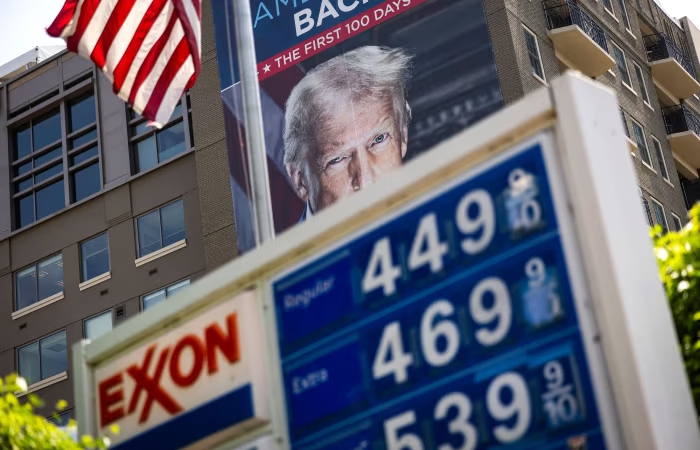Millennials are not the problem, it’s the economy that’s failing a generation

When an old American institution is declared dead, the media often points fingers at the Millennial generation. This group, consisting of over 80 million individuals born between the early 1980s and late 1990s, has been accused of killing off various staples of modern life. From golf courses and department stores to McDonald’s McWraps and canned tuna, Millennials are often blamed for these losses. They’re even said to be diminishing our ability to experience serendipity. With the national murder rate on the decline, one might jest that Millennials are putting an end to killing itself.
Comparing the spending habits of Millennials to those of previous generations, researchers found little difference in preferences. Instead, they discovered that Millennials are worse off financially than their predecessors at the same age, earning less and accumulating fewer assets. The conclusion is clear: it’s not Millennials killing the economy; it’s the economy that’s killing Millennials.
My experience with this scapegoated generation dates back to 2012 when I collaborated with Jordan Weissmann on a column titled “The Cheapest Generation” in The Atlantic. The headline misled many readers into thinking we were accusing Millennials of being frugal, but our real inquiry was whether the Great Recession had permanently altered their appetite for crucial investments like houses and cars.
For years, studies from outlets like The Washington Post and the Pew Research Center indicated that young people are purchasing fewer cars and homes compared to earlier generations. By 2016, only 34 percent of Americans under 35 owned a house, while nearly half of Boomers and Gen Xers did at the same age. However, just because Millennials aren’t buying homes doesn’t mean they don’t want to; it often indicates they can’t afford them. Research from the Federal Reserve confirms this perspective.
Fed economists found that the low homeownership rate among Millennials is primarily linked to income and affordability. When accounting for income and employment, the generational differences in homeownership nearly vanish. Additionally, homes today are significantly less affordable. In 2017, the median sale price of single-family homes was 4.2 times higher than median household income—30 percent more than in 1988. This trend is even more pronounced in cities like San Francisco, where median home prices skyrocketed to over $1.6 million.
On the car front, while reports suggest that the average age of new car buyers is increasing, this trend masks the reality that Millennials are purchasing the same number of cars per capita today as they did in 2005, during the housing bubble. The shift in average age is largely due to older Americans buying more new vehicles, now accounting for nearly two-thirds of all new car purchases.
Millennials do spend less on transportation, but this is part of a broader decline in transportation spending across all demographics. In fact, transportation spending has dropped by almost 5 percent as a share of household budgets over the last three decades.
Ultimately, economists have found no evidence that Millennials possess lower preferences for vehicles compared to earlier generations. They’re often unfairly labeled as the culprits behind significant economic and cultural shifts, when in reality, they’re just the latest scapegoats.
If there’s one area where Millennials stand out, it’s in politics. They are notably more left-leaning than previous generations and have voted for Democrats at unprecedented rates. They show a greater openness to various forms of socialism. As I pointed out in 2016, Millennials feel both marginalized in the workforce and yet morally compelled to advocate for change.
The reason behind this revolutionary fervor? Perhaps it’s because Millennials haven’t rejected the American dream; rather, they’ve been denied access to it and punished for trying.
As the most educated generation in U.S. history, Millennials entered a social contract promising success through higher education. Yet, the soaring costs of college led millions to incur significant student debt. Those under 35 are nearly 50 percent more likely to carry student loans than Gen Xers, and their median debt balance is approximately 40 percent higher.
What does this debt yield? “Lower earnings, fewer assets, and less wealth,” as concluded by the Federal Reserve. The burden of student debt further complicates their ability to buy homes, as holding debt correlates with a lower homeownership rate.
Is it any surprise that Millennials are eager to disrupt a system that has led them into debt, stagnated their wages, and stripped them of the markers of adulthood, only to blame them for ruining canned tuna?
Sociologist James Chowning Davies studied revolutions and found that they often occur when a prolonged period of economic development is followed by a sharp reversal, leading many to feel that their reality has fallen short of expectations.
Millennials were promised rising wages, homes, and cars; instead, they find themselves with little more than 280 characters of discontent, sharing their frustrations with 80 million peers. They are not the cultural criminals they’ve been made out to be but rather victims of a system that continues to ignore their plight.



